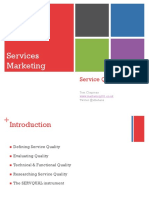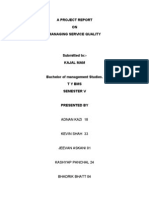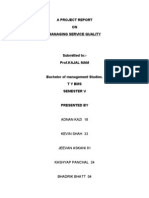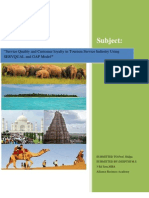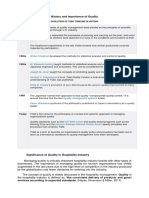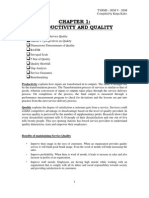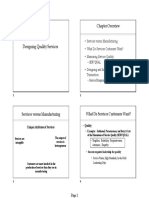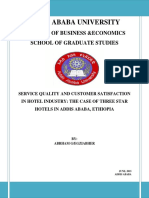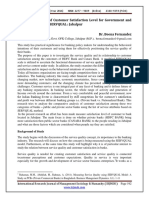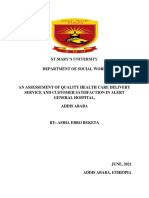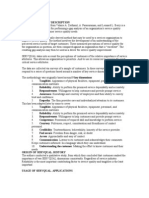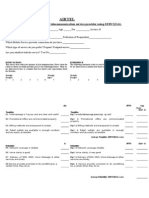0% found this document useful (0 votes)
73 views38 pagesTHC QSM Lesson 2
This document outlines the importance of quality service operations in tourism and hospitality, detailing the characteristics of services, the Service Process Matrix, and the management of service quality. It emphasizes the RATER model for evaluating service quality and discusses the five gaps that can affect customer satisfaction. Additionally, it highlights the significance of understanding customer expectations and the factors that influence them to enhance customer loyalty and satisfaction.
Uploaded by
Module LegendCopyright
© © All Rights Reserved
We take content rights seriously. If you suspect this is your content, claim it here.
Available Formats
Download as PDF, TXT or read online on Scribd
0% found this document useful (0 votes)
73 views38 pagesTHC QSM Lesson 2
This document outlines the importance of quality service operations in tourism and hospitality, detailing the characteristics of services, the Service Process Matrix, and the management of service quality. It emphasizes the RATER model for evaluating service quality and discusses the five gaps that can affect customer satisfaction. Additionally, it highlights the significance of understanding customer expectations and the factors that influence them to enhance customer loyalty and satisfaction.
Uploaded by
Module LegendCopyright
© © All Rights Reserved
We take content rights seriously. If you suspect this is your content, claim it here.
Available Formats
Download as PDF, TXT or read online on Scribd
/ 38







